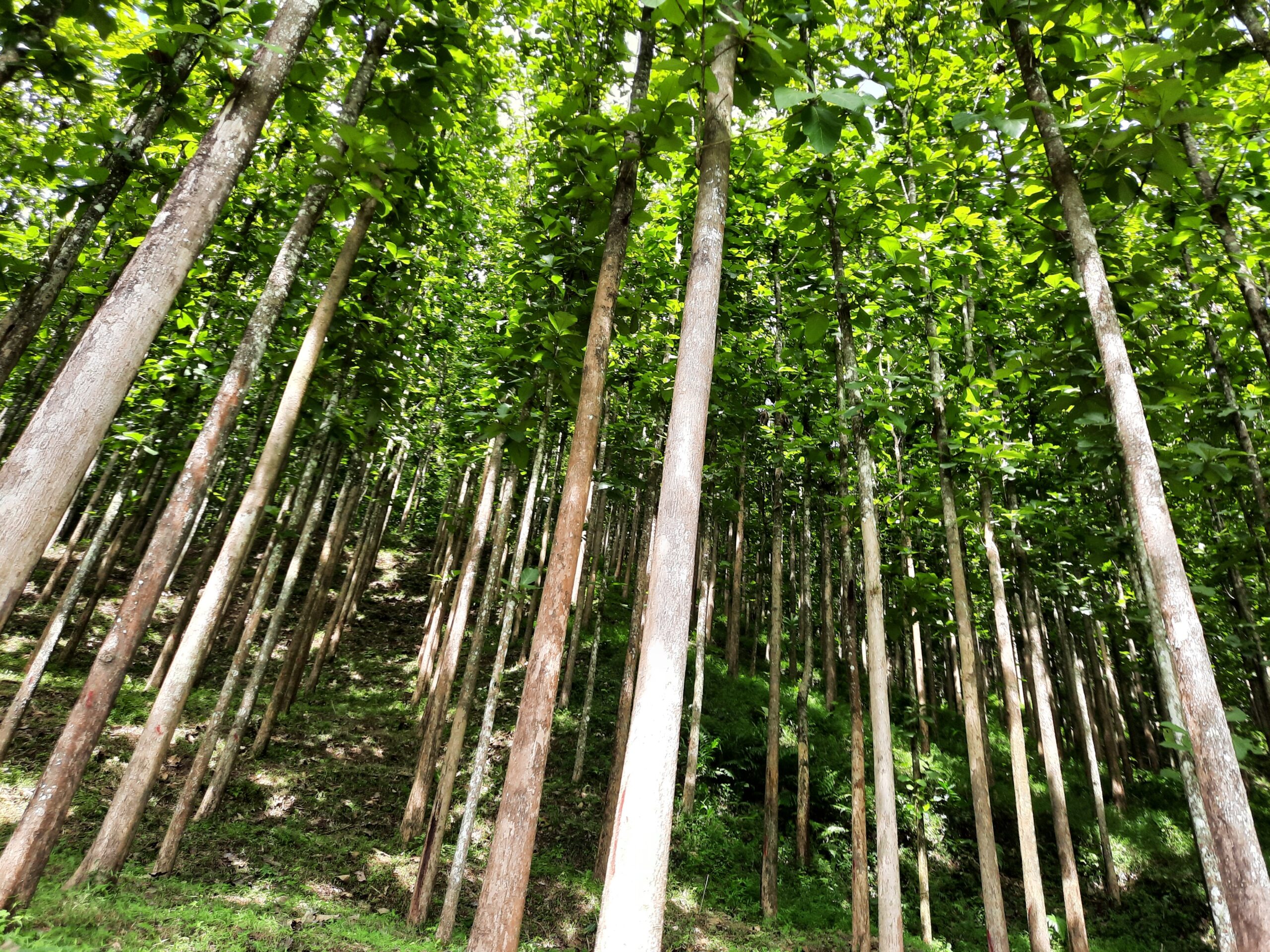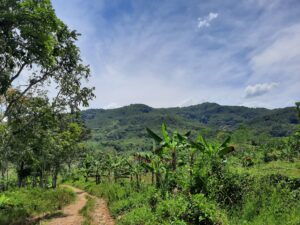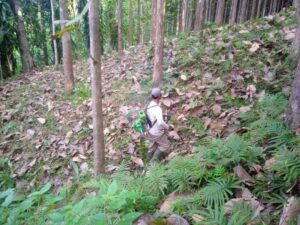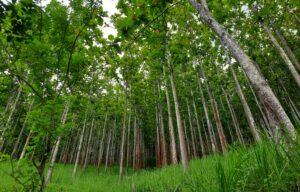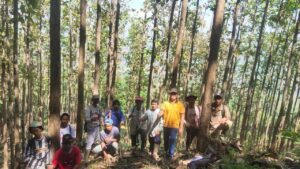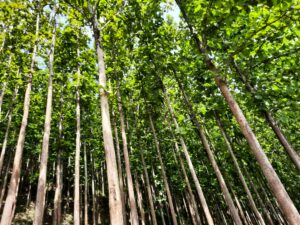In 2003, from total 100% of Perhutani’s teak forest land in Java, around 76% was production forest and mostly teak wood. The remaining 24% is a protected forest, tourism forest as well as nature reserves.
Teak plantation or teak forest has an economic function and a non-economic function. An important non-economic function is as a buffer for the ecosystem. Teak tree canopy can absorb and decompose pollutant substances and excess light. The canopy of teak trees also carries out the process of photosynthesis which can absorb carbon dioxide from the air and release oxygen and water vapor back into the air. All of these processes are very helpful in maintaining a stable climate inside or outside the forest. In addition, teak trees also help fertilize the soil, the roots of teak trees grow wide and deep so that they can loosen the soil, water and air can easily enter it. Twigs, leaves, fruit and flowers that fall will cover the soil surface and become litter and litter will process into soil humus. The litter will also absorb rainwater so that the soil is protected from erosion.
The teak forest area is definitely green with cool climate and has a higher biodiversity compared to other forest areas. A green environment will invite many animals to stop by, one of which is a bird. If an area is frequently visited by birds, it is a sign that the area is a little or even less polluted.
And what is more important than all that is that the green area will become a resource reserve in the future.
